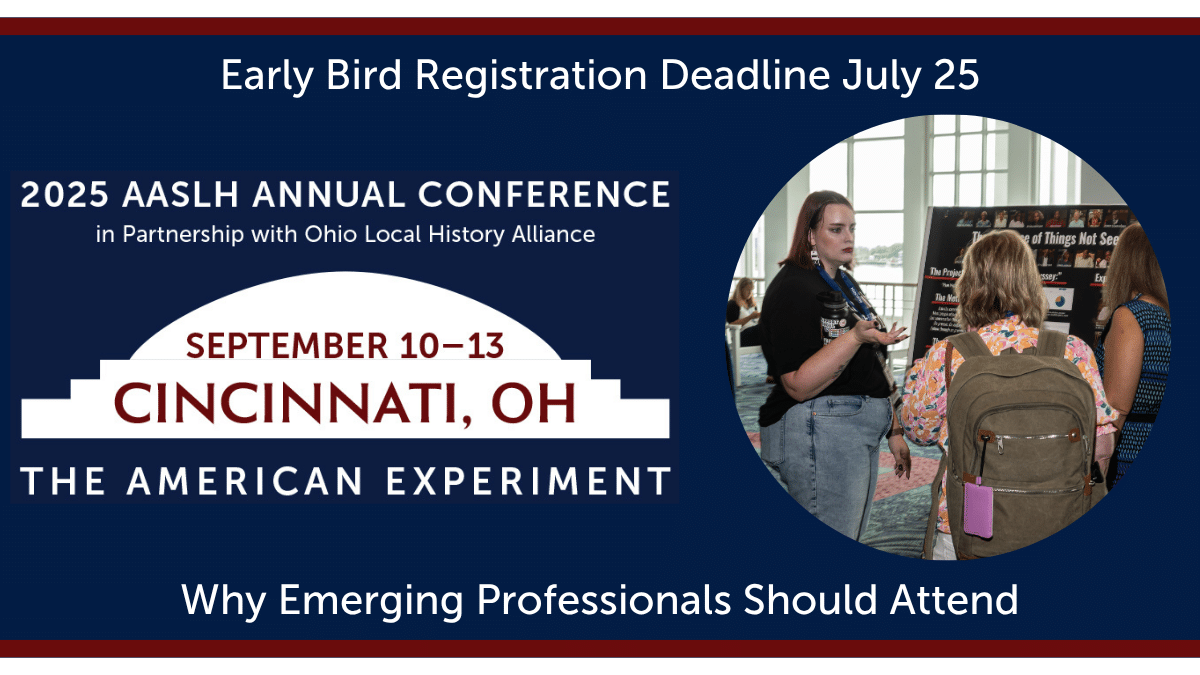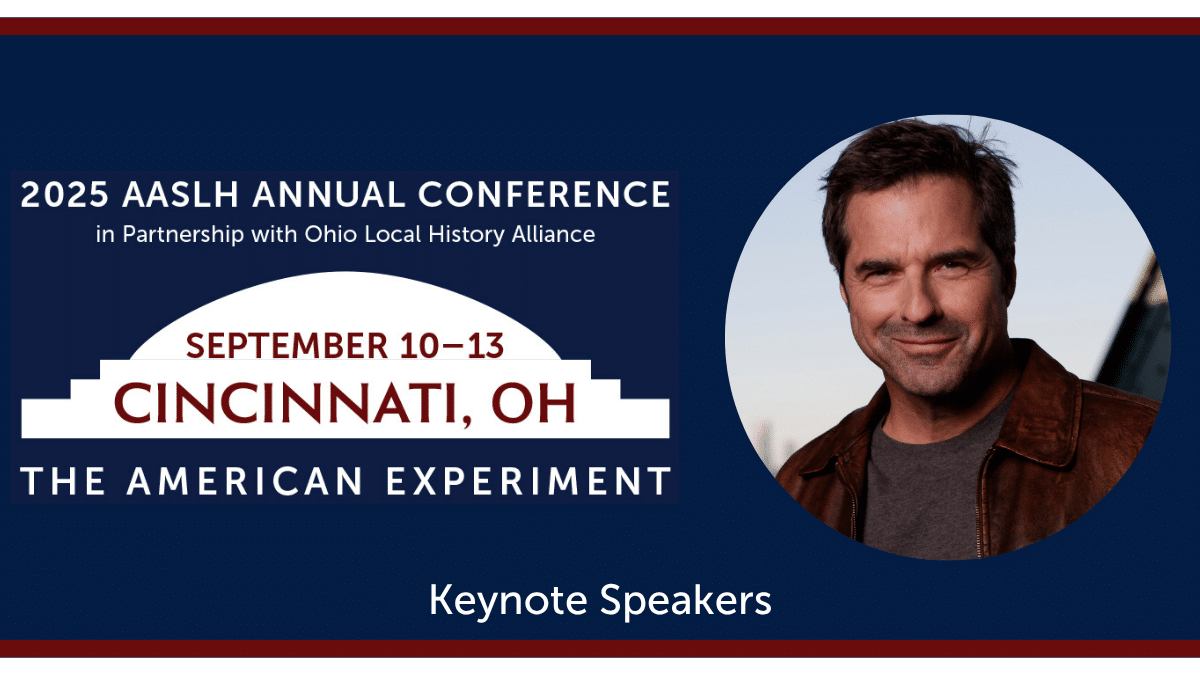
By Alima Bucciantini, Assistant Professor of Public History at Duquesne University, Pittsburgh, PA
I have cerebral palsy. It’s a neuromuscular disability that can have a wide range of effects, but for me it means that I wear braces on my legs and usually use a snazzy colored crutch to walk. My disability had been both an integral part of my life and not a big deal. It’s always been there, but my parents never let it stop me doing anything I, or they, wanted to do. Everyday experiences like going to the museum were often seen as good excuses for practicing practical life skills, like climbing stairs. We all know how many stairs can be outside museums! We went everywhere, and I don’t remember often looking for an accessible entrance or alternative route. Instead, my parents would encourage me to make it work, and help me subtly when I needed it.
This approach fostered my independence and sense that I could do anything. It also meant that I didn’t even think to mention my disability when I got my first museum internship over the phone as a college sophomore. I just happily assumed I could do anything and everything, and that I would be as accepted as any other intern. After all, I could make it work— I was at college by myself, living independently away from family. Why would I not be able to intern?
It was a shock, then, when I was greeted on my first day by a boss who looked at me and expressed concern that I could do the job required. I had no good response, other than silence. I was unsure of my rights, and also unsure if she was right! All of a sudden I felt more disabled and more visible that I ever had before.
For the record, I was able to do everything. There is nothing too inaccessible about volunteer management and program research, even on the National Mall. Everything can be worked around. I would not have accepted an internship that required me to be on my feet all the time or go running or anything—that would have been ridiculous for me and everyone involved.
I went on to have a wonderful, busy, and eye-opening summer working for the Smithsonian Center for Folklife and Cultural Heritage. I helped to recruit, train, and manage volunteers, I entered data in databases, and I researched upcoming exhibitions and sourced objects. But running under all of it was a feeling that I had to prove myself. Every intern has this, of course, but I felt that I couldn’t ask for any help, show any weakness, or ever let them know I was tired. I had to be better than that. The other thing was that I did not go to anyone there about my concerns, or about the fact that I did not feel part of the team. I have told this story to only a few people in the years since that internship.
During that time, I began to realize that the world does not see me the way my parents do. Everyone has this realization sometime, but it was especially harsh for me. I had to come to terms with the fact that the museum world, where accessibility is supposedly considered in audience terms and when designing labels and exhibits, does not often have a level of comfort with disability in its staff.
There is a “them” to be considered with accessibility in mind, and an “us” who does the considering. But according to the Census Bureau, one in five Americans has a disability of some sort, even if not all are visible ones like mine. Even more will acquire a disability at some point in their lives, at least temporarily.
When I finished my Ph.D. program, I began looking contemporaneously at academic jobs and curatorial jobs, seeing as my specialty was museum studies. All the museum job postings have “must be able to lift twenty-five pounds” under essential job skills. Others upped this to fifty, or added climbing a ladder. If a job function is listed as essential, it falls outside the Americans with Disabilities Act’s (ADA) “reasonable accommodation” language. This means jobs with these requirements are under no responsibility to accommodate people who cannot fulfill these physical tasks. I can’t safely climb a ladder. Probably no one wants me to try to lift fifty, or even twenty-five, pounds and go anywhere with it—but is that what makes a curator?

Instead of doing that, I have worked with art and objects by taking things out of storage (carefully, safely), putting them on carts, moving them to tables, sitting down, or balancing myself against something, and handling them. Technology also helps a lot. There are programs that allow you to create whole gallery layouts, with your own collection, in your own gallery space, arranging and re-arranging each case and wall to your satisfaction in virtual reality without getting on a single ladder. You can then hand the printouts and specifications to a facilities and installation team and just oversee while they climb the ladders.
All of this is to say that the type of language that I encountered as I entered the field and still see today is an unnecessary barrier to entry. At a time when we are—or should be—trying to diversify the museum and public history field, why are we not lowering barriers? Or at the very least, thinking critically about why they are there?
Museums, at their start, were meant to be exclusionary spaces. They were meant to keep out the riff-raff and be imposing temples of learning. But luckily we have evolved past that now and are embracing a more community-oriented, open doors policy. Disability is part of the community and in the museum world, that can be more than just ADA standards. It’s about representation, and really thinking about what make the collection and the work space open to everyone. I get so frustrated sometimes at conferences and reading texts about disability in museums, because there is so often language about working with the disability community in the museum space, as if there is a clear divide between that community and those who are doing the work.
While there might not be many museum workers with visible disabilities like me—though there would be more if the barriers discussed above were lowered—I am sure there are many with invisible disabilities such as mental illness, vision impairment, hearing impairment, ADHD, and so many others. How much better could we be as staff if people felt they could be open about those issues, and used their experience with their disabilities to make their understanding of what visitors want and need from museums better?

My friends and students say that they see historic sites differently after going with me. They notice where the elevators are or aren’t, how often there are benches to sit on, and how easy it is to read labels and to navigate around rooms. They then translate that experience to their friends and family who might visit with kids in strollers or with elderly grandparents. Because the thing is, what makes life easier for me also makes life easier for a lot of people who might like to be in the museum. This is the beauty of universal design. It’s not that I’m the only one that can see this, but who is doing it? Everyone should be.
As just one person with a disability in the field who wants to see museums and public history grow, here are my recommendations. Think about how you can be accessible to disabled workers on your staff, starting with your job ads. Use the diversity of your staff as an asset, one that can help you connect to and build your audience. Think about your framing. Is accessibility something you have to do, just because of ADA standards? Change it, and make it an asset.
A truly accessible space is good for the community. It’s good for babies and good for the elderly, and along the way, it’s good for us disabled people, too. It’s good for everyone.
Learn more…
-
- Amanda Cachia, “Disability, Curating, and the Educational Turn: The Contemporary Condition of Access in the Museum,” Oncurating.org (December 2014), http://www.on-curating.org/files/oc/dateiverwaltung/issue-24/PDF_to_Download/Oncurating_Issue24_A4.pdf
- Art Beyond Sight, “Disability and Inclusion: Resources for Museum Studies Programs,” http://www.artbeyondsight.org/dic/about-new/
- Arts Council, “Disability in the Arts and Cultural Sector Workforce in England,” https://www.artscouncil.org.uk/community-and-place/disability-arts-and-cultural-sector-workforce-england
- Caroline Braden, “Welcoming All Visitors: Museums, Accessibility, and Visitors with Disabilities,” University of Michigan Working Papers in Museum Studies (2016), http://ummsp.rackham.umich.edu/wp-content/uploads/2016/10/Braden-working-paper-FINAL-pdf.pdf
- Job Accommodation Network, https://askjan.org/
- North Carolina State University College of Design, “Principles of Universal Design,” https://projects.ncsu.edu/ncsu/design/cud/pubs_p/docs/poster.pdf
- Richard Sandell, Jocelyn Dodd, and Rosemarie Garland-Thomson (eds.), Re-Presenting Disability: Activism and Agency in the Museum. New York, Routledge, 2010.
- Zachary Small, “A New Initiative Places Curators Who Identify as Disabled at UK Museums,” 15 May 2018, https://hyperallergic.com/442437/dash-arts-announces-initiative-for-disabled-curators/
- Smithsonian Guidelines for Accessible Exhibit Design, https://www.si.edu/Accessibility/SGAED
This column originally appeared in the summer 2018 issue of History News as part of our “The Whole Is Greater” series.



